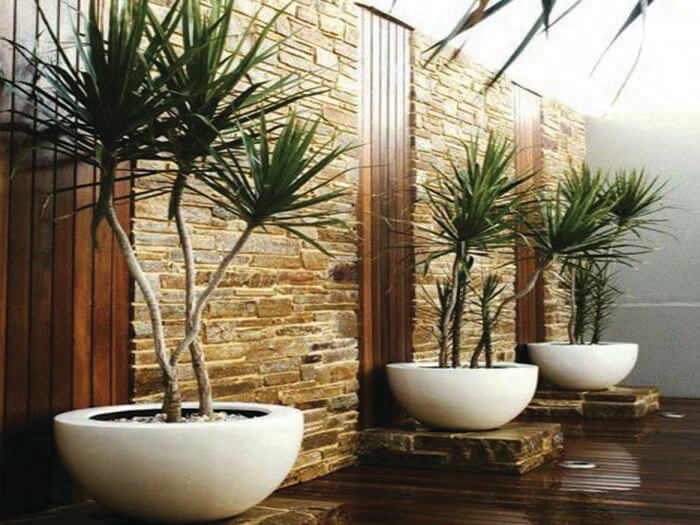Natural Stone
Ess Future company with a knowledgeable, experienced team is always available to consult the customers. Just need to know what kind of natural stone you need and the application. We will advise you on the best choices and the exact details.
For more information and get the catalogues, please contact us. Natural stone as a natural product could have numerous designs and colours, but in general, made of 3 categories which have the best absorption in the construction material market.
natural stone products
What is the meaning of slab stone?
A natural stone Slab is a special cutting and polishing model for stones. In general, in the stone industry, a stone cut into tiles that width is more than 70 cm is called slab stone. Various rocks such as granite, marble, onyx, and Travertine, after extraction from the mine in the form of blocks, are cut into large pieces; And after cutting to the desired dimensions; They are in the category of slab stones. The regular thickness is 2 cm and 3 cm. Because the process of cutting, polishing, and transporting stone in slab sizes is very challenging and sensitive, the final piece could be more expensive than small tiles.
Slab Collections Catalogues
Inquire now!
+971 (50) 794- 7450
Email: sales@essfuture.com
A summary of different types of natural stones
When buying floor tiles, it is imperative to pay attention to tiles’ durability and erosion resistance specifications and that the floor tiles should not be slippery. It could be dangerous, especially for kids. In high-traffic areas use of the most durable ceramic and porcelain tiles is a saving money technique. Although not the same as porcelain as high-quality adorable tiles, acceptable ceramic tile is an excellent choice for our homes if you are worried about scratching or dent resistance. Ceramic tile installation procedure and appropriate maintenance play important roles in its appearance over time, especially in floor tiles.
Granite stone
Granite stone can be seen everywhere. Beautiful sculptures in museums and in the middle of squares, columns in front of old buildings, magnificent arches, walls, corridors, fireplaces, floor tiles, and countertops are all made of this superb granite stone. The glory that comes to everyone’s eyes at a glance. Granite is an igneous rock composed of molten lava deep in the earth’s crust. As the lava cools, it crystallizes under high pressure. Crystallization is the reason for the coloured spots of this stone. Depending on how long it took for the lava to cool and crystallize, the texture of the stone will be different. The more time to be formed the granite the more sizes of crystals it will have.
This stone comes from the Latin word granum; it comes from the grain word. The price of various granite stones depends on the desired colour, texture, and application.
Travertine is a decorative stone that is a porous limestone. These stones are left from the sediments of hot springs, and due to the gases trapped in the water, this rock has a spongy appearance. The variety in colour and design of travertine stone has made it ideal for designing building facades.
Onyx stone has special features and advantages. Due to this issue, this stone is widely used in the construction of buildings in different sectors. Among the advantages and features of this building stone, the following can be mentioned. High density, no porosity, smooth and polished surface, low water absorption, light transmission, Lack of heat and cold absorption.
Onyx, with these characteristics along with its extraordinary beauty, is a special and vulnerable stone. Because this stone is easily scratched and stained, it needs more care than other building stones. Onyx transmits light and is mostly used as decorative. The colour type of this stone is based on its variety and its impurities. For example, yellow or brown due to hydrated iron oxide, red or pink due to dehydrated iron oxide, and gray due to the presence of manganese and coal. In general, onyx stone is often yellowish-brown. Available in white, light to dark yellow, honey, red or light green to dark.
In addition, due to changes made by water flow, their designs are different from each other, such as wavy or spotted designs.
Price of natural stone
Tile stone is cheaper and more economical than slab stone, and the high quality of the tile compared to the price has greatly increased the popularity of this type of stone.
Determining the price of tile and other stones, in general, requires careful consideration of the customer’s order and many points. Because pricing on different types of building stones depends on several factors, including the type of stone cutting, the accuracy of the cutting machine, the type of processing performed on the stone, the quality of the selected stone, the dimensions of the tiles or slabs, the required thickness, the role On stone, type of transport.


Dimensions of slab stones
Slab stone is usually produced in dimensions of 120 x 220 cm, and its thickness is usually two and three centimetres. Generally, if a stone is more than 70 cm wide, it is called a slab stone. Absolutely, these sizes may depend on where the stone is used. For example, exporting slab stones have a width of 120 cm and a length of 250 to 300 cm.
about natural stone
Civilizations such as Egypt, Greece, Iran, and ancient Rome have used natural stones for thousands of years. Certainly, all of these civilizations were aware of the various benefits offered by this natural material. Today, all concerns are about the sustainability and beauty of buildings. With the knowledge of the past, we can make the best decisions for our construction.
The advantages of natural stones in terms of extraction, energy consumption, processing, recycling, and flammability are especially for environmentally friendly buildings. Natural stones are also predicted as the most important indicator of sustainable development due to balancing the positive and long-term economic, social and environmental impacts on nature.


One of the special features of natural stone is its various applications, which makes it unique in any part of the building, whether facade, wall covering, or flooring, and provides countless options for architects and builders. Therefore, natural stones are the most pristine materials selected in the construction and architecture industry for various reasons, from thermal efficiency to a unique and natural appearance, to create the best living space.
Natural stone has many structural, appearance and environmental advantages over other building materials and, thanks to its unique properties, plays an essential role in the architecture of luxury buildings. In the following, we will examine why stone is a stable natural material from other materials.
Seven reasons why natural stone is stable
1- Natural Stone is a natural material
The first condition for the stability of a stone is its natural source. Natural stones are a heterogeneous mixture of minerals that have been formed over millions of years under the influence of pressure and the presence of mineral salts that act as adhesives and do not require artificial materials or other sources. There is a great variety of different veins, textures, colours, shapes, and technical characteristics in nature, which makes the stone to be used in a wide range of applications and tastes. The different appearance of natural stones results from millions of years of geological change and mineral composition. The most important part of the stone that makes many people fall in love with its originality and naturalness and the superstructures of each design and colour.
2- Not made from toxic products and does not produce toxic gas and smoke
Natural stone does not contain harmful chemicals or toxins, and no harmful chemicals are used in the production and processing stage. Since stone is usually available locally, the stone produced and mined in the area, while supporting the local economy, reduces the harmful effects on the environment by reducing greenhouse gas emissions during transportation.
3- Improving indoor air quality
As mentioned earlier, stone does not release toxic chemicals into the atmosphere during production or use in buildings. Natural stone achieves the highest indoor air quality (A +), thus protecting the ambient air quality indoors, improving the comfort level and increasing the quality of life. In addition, natural stone combines the art of nature and the human industry to create inspiring and beautiful homes.
4- Energy efficiency
Energy consumption is one of the most critical items in Green buildings, and the insistence on using natural materials for this purpose.
Natural stone is superior in energy efficiency to other materials such as glass. The heat transfer coefficient is lower due to the lower heat transfer of the stone. Therefore, energy loss in winter and air conditioning costs in summer are significantly reduced.
5- Durable and lasting life cycle
Natural stone is durable and attractive and has the most extended life cycle in architecture and construction. Natural stone is the best choice for builders due to its remarkable stability. Stone has proven to withstand atmospheric fluctuations and temperature changes better over the centuries than any other building material.
Natural stones such as Travertine, granite, and marble retain their beauty and elegance for many years and bring peace and joy to the residents. The stone can easily withstand heavy traffic and lasts well in courtyards, building facades, kitchens, and bathrooms. Adequately covered, it will withstand plenty of adverse conditions for up to 100 years.
6- Ease of care and maintenance
Easy maintenance and care of natural stones are very attractive for residents and architects. In fact, the stone does not need any care during its life. No chemicals are required to clean natural stone. Most stones can be easily cleaned with water and regular detergents. There are also Natural stone cleaners that are affordable and easy to use. Many of these cleaners meet sustainability standards free of harmful chemicals and do not pollute the environment. By knowing the stone used in your home, you can easily take care of it.
7- Natural stones are recyclable
The recyclability of natural stone is unparalleled and has the potential to offer a variety of applications and roles throughout its life. From an environmental point of view, the use of recycled stone can destroy energy, water, and other resources needed to produce new stones and ultimately prevent destructive effects on ecosystems.
Almost all natural stones used in old projects can be recycled. For example, the stones of an old building can be removed and used as paving and landscaping or on the exterior. New designs or appearances can be created by working old stone pieces together. Beautifully, the restoration and reuse of old stones create a sense of history or nostalgia in the house.
